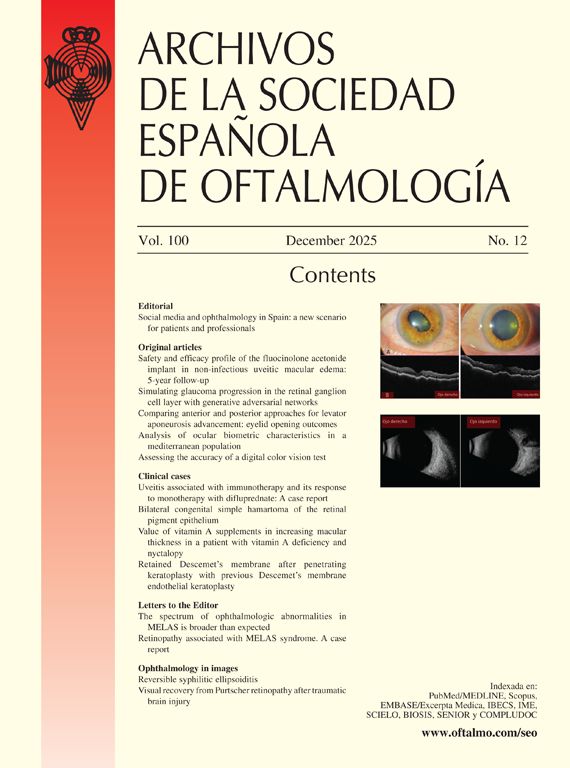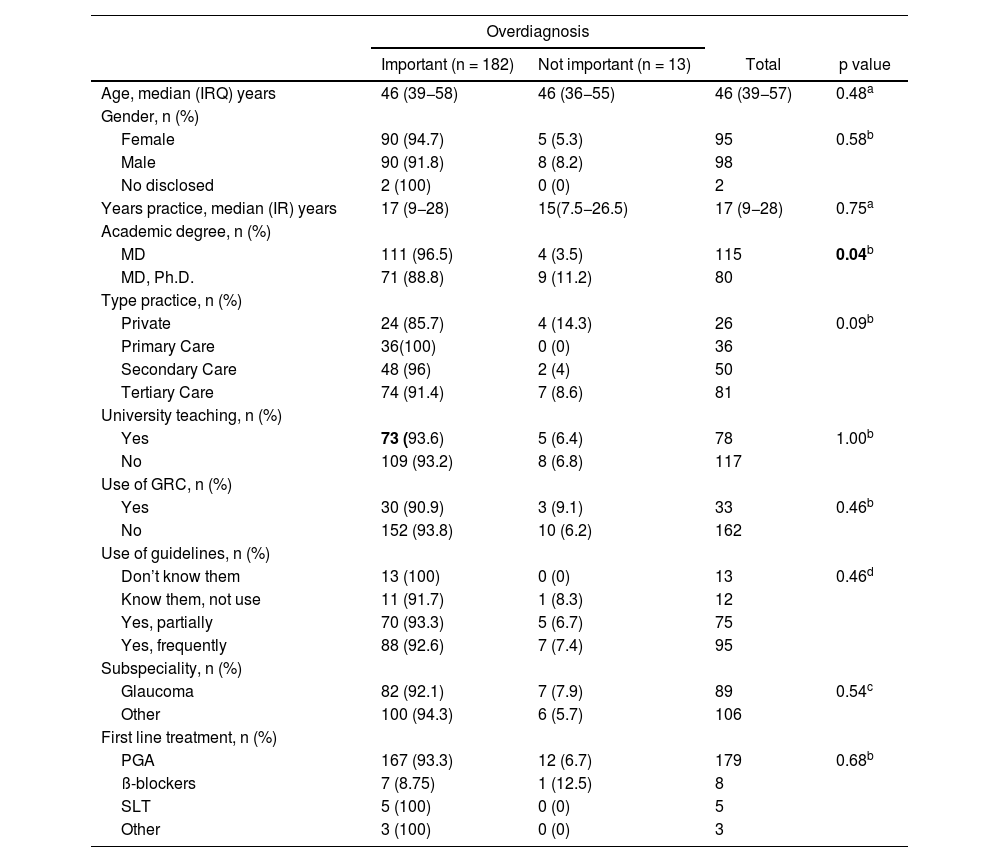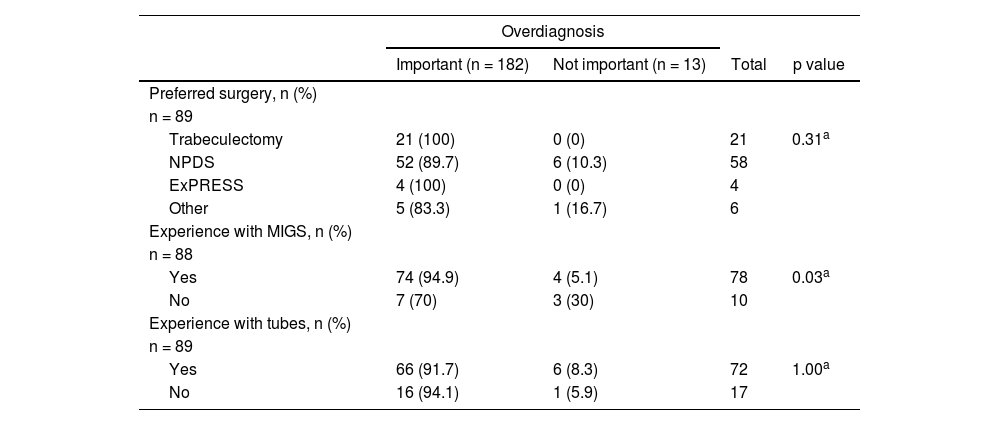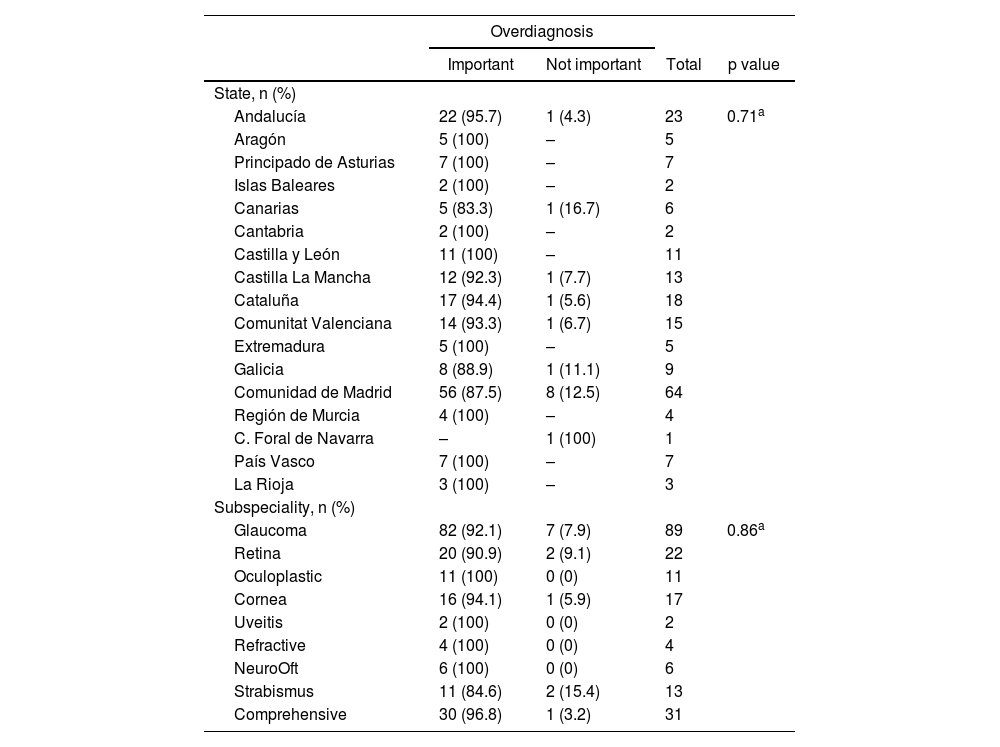To assess the perception and knowledge that Spanish ophthalmologists have of overdiagnosis (OD) and overtreatment (OT) in the field of glaucoma.
MethodsAn anonymous, 26-item online survey was submitted to members of the Spanish Glaucoma Society and the Spanish Ophthalmology Society.
ResultsApproximately 55% out of the 195 respondents were aware of the current definition of OD/OT. Only 13 (6.7%) believe OD/OT is not a clinically significant problem. There were no significant differences in terms of demographics, type of practice and treatment preferences between ophthalmologists who considered OD/OT important and those who considered OD/OT unimportant, except for a higher proportion of PhDs among the “not clinically relevant” group. No differences were found either across groups considering clinical findings/real-world scenarios. “Peace of mind” was considered a principal driver of OD/OT by both groups. Moderate OHT was considered the most common clinical scenario for OD/OT, which was estimated to affect 20% of medically treated patients and only 5% of those undergoing surgical procedures.
ConclusionsSpanish ophthalmologists reported being aware of the importance of OD and OT. However, only half were aware of the current definition of OD and OT. Most participants believe a White Paper should be produced to reduce the prevalence of OD/OT. The low participation rate and the non-response bias may limit the generalization of the results.
Evaluar la percepción y el conocimiento que los oftalmólogos españoles tienen sobre el sobrediagnóstico(SD) y el sobretratamiento(ST) en el campo del glaucoma.
MétodosEncuesta electrónica anónima de 26 ítems remitida a los miembros de la Sociedad Española de Oftalmología y la Sociedad Española de Glaucoma.
ResultadosDe los 195 encuestados, el 55% conocían la definición actual de SD/ST. Solo 13 (6,7%) consideraron que el SD/ST no es un problema clínicamente significativo. No hubo diferencias significativas en términos de demografía, tipo de práctica y preferencias de tratamiento entre los oftalmólogos que consideraban el SD/ST importante y los que no, excepto por una mayor proporción de oftalmólogos doctores en el grupo que consideraron el SD/ST como "no clínicamente relevante". No se encontraron diferencias entre los grupos en relación a los hallazgos clínicos/escenarios de la vida real que pueden favorecer el SD/ST. La "tranquilidad mental" fue considerada como un impulsor principal del SD/ST por ambos grupos. La HTO moderada fue considerada el escenario clínico más común para el SD/ST. Los encuestados estimaron que el SD/ST afecta al 20% de los pacientes tratados médicamente y solo al 5% de aquellos sometidos a cirugía.
ConclusionesLos oftalmólogos españoles consideran importante del SD y ST. No obstante, solo la mitad conocía la definición actual de SD y ST. La mayoría de los participantes creen que se debería elaborar un Libro Blanco para reducir la prevalencia del SD/ST. La baja tasa de participación y el sesgo de no respuesta pueden limitar la generalización de estos resultados.












